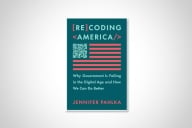You have /5 articles left.
Sign up for a free account or log in.
What do county lines mean when you work from home? For that matter, what do state lines mean?
My own college has decided, in its way, that it depends. For in-person classes, it charges premium tuition for out-of-county or out-of-state students. But if you’re taking an online class, the tuition is the same whether you’re two miles away or 2,000 miles away. (That will have an impact this fall, now that we’ve decided to put everything online that can be.) The original motivation was as much competition as altruism, but in our new reality, it recognizes that if you’re taking a class on your laptop, the experience isn’t all that different based on where the laptop logs on.
Annoyingly, The Boy’s college has not made the same decision. It could, but it hasn’t. This is the sort of thing that people remember.
The original idea behind out-of-state premiums -- or in-state discounts, if you prefer -- is recognition of the role of taxpayer support. To the extent that local and/or state tax revenues keep costs down, then passing those savings on to students from the families that paid those taxes makes some sense. When tax support was a higher percentage of the budget, and the premiums (or discounts) relatively small, the system was defensible.
Over time, though, geographic price differentials at most public colleges and universities have increased even as the portion of budgets covered by tax support has decreased. Or, to put it differently, geography has come to matter more on price even as it matters less on delivery.
The disconnect happened incrementally. In any given year, when public funding falls short, it’s politically easier to raise prices on people who aren’t at the table. (A similar logic applies to hiring freezes: everyone around the tables agrees, in the spirit of unity, to shift costs onto people who aren’t at the table.) Even if the logic grew progressively more strained each year, its roots were recognizable.
For a while, the disconnect between the declining educational relevance of geography and the increasing economic relevance of it was easy enough to ignore or rationalize. But with so many colleges moving mostly or entirely online, what had once been an anomaly is quickly becoming a standard. And we haven’t really started to think that standard through.
The pandemic is throwing old geographic certainties into question. Malls, as taxpaying “ratables,” are struggling to survive. Commuting is changing, and likely to continue to change. I literally can’t imagine how bad New York City traffic would be if most of the people who currently take mass transit suddenly tried to drive to work. (Among other things, where would they park?) I’ve been reading about a sudden spike in interest in the suburbs, as folks who are suddenly working from home in tiny apartments realize that some extra square footage would come in handy. That’s a reversal of a long-term trend.
Housing patterns have partially followed employment patterns over time. (I say "partially" because segregation has a lot to do with it, too; if convenience were the only issue, Newark would be some of the most coveted real estate in New Jersey.) To the extent that the geography of employment changes, so will housing. Over time, so will public institutions defined by geography. The pandemic accelerated changes that were already happening.
At this point, it’s much too early to know how long the pandemic’s effects will last, or how soon the next one will come along. But it has already gone on long enough to call into question the ways that work and geography have been connected for generations. That will have consequences for housing patterns, tax bases and, eventually, citizen expectations. Institutions defined by geography will have to start thinking differently. For colleges that literally have “community” in their names, this strikes at the heart of the mission. If everyone is a citizen of the internet, then the citizen discount is hard to sustain.







